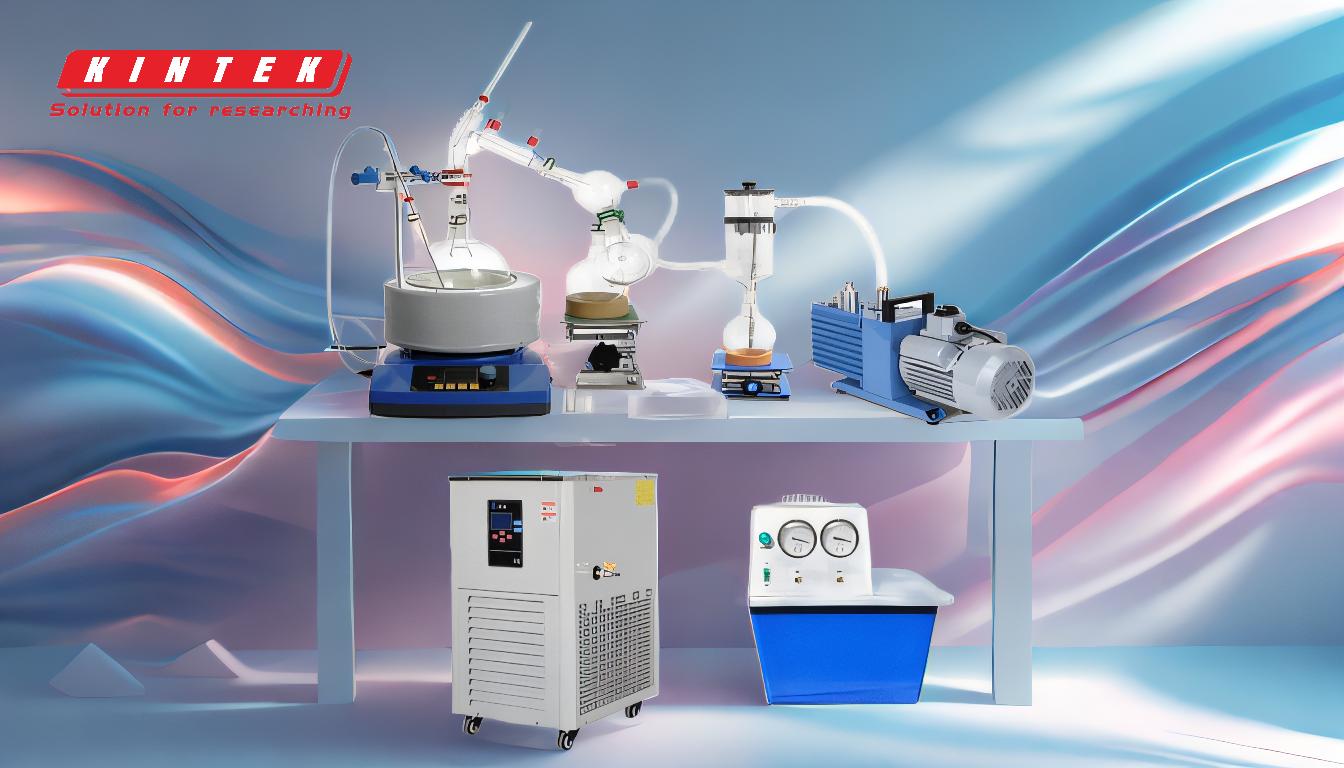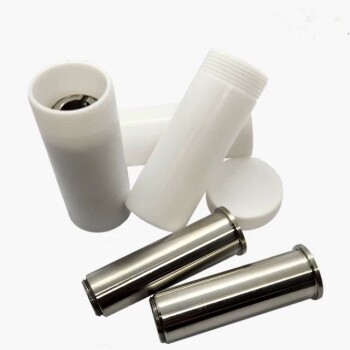Short-path distillation is a highly efficient method used to separate and refine oils, such as cannabis or hemp oil, by leveraging differences in the boiling points of their components. The process involves heating the crude oil in a boiling flask under reduced pressure, which lowers the boiling points of the compounds, allowing them to vaporize at lower temperatures. The vaporized compounds travel a short distance to a condensing coil, where they are cooled and condensed back into liquid form. This method is particularly effective for isolating specific compounds like THC, CBD, and terpenes, resulting in a pure distillate that can be used in various applications such as vape pens, topicals, and edibles. The process can be repeated multiple times to achieve optimal separation and refinement.
Key Points Explained:

-
Process Overview:
- Heating and Agitation: Crude oil is placed in a boiling flask and heated while being agitated with a magnetic stirrer. This ensures uniform heating and prevents localized overheating.
- Vaporization: As the temperature increases, the compounds in the oil begin to vaporize. The use of a vacuum reduces atmospheric pressure, lowering the boiling points of the compounds and facilitating faster and more efficient distillation.
- Condensation: The vaporized compounds travel a short distance to a condensing coil, where they are cooled and condensed back into liquid form. This minimizes the loss of distillate and ensures high purity.
-
Equipment and Setup:
- Boiling Flask: The crude oil is placed in a boiling flask, which is heated to the required temperature.
- Condensing Coil: Located close to the boiling flask, the condensing coil cools the vaporized compounds, causing them to condense back into liquid form.
- Vacuum Pump: A vacuum pump creates a reduced-pressure environment within the flask, lowering the boiling points of the compounds and facilitating faster distillation.
- Receiving Flasks: The condensed liquid is collected in separate receiving flasks based on the weight and boiling points of the compounds.
-
Separation Mechanism:
- Fractional Distillation: The process takes advantage of the different boiling points of the compounds in the oil. By gradually increasing the temperature, specific components of the mixture evaporate at their respective boiling points.
- Multiple Passes: The distillation process can be repeated multiple times to achieve optimal separation and refinement of the desired compounds.
-
Applications:
- Cannabis and Hemp Oil Refinement: Short-path distillation is commonly used to refine crude cannabis or hemp oil, separating desirable compounds like THC, CBD, and terpenes from undesirable ones.
- End-Products: The final distillate is a pure product that can be used in various applications, including vape pens, topicals, edibles, and more. The distillate typically has no taste or smell, but terpenes can be added back depending on the desired end-product.
-
Advantages:
- High Purity: The short distance between the boiling flask and the condensing coil minimizes the loss of distillate and ensures high purity.
- Efficiency: The use of a vacuum reduces the boiling points of the compounds, making the distillation process faster and more efficient.
- Versatility: The process can be tailored to isolate specific compounds, making it versatile for various applications.
-
Considerations for Purchasers:
- Equipment Quality: High-quality equipment, such as a reliable vacuum pump and efficient condensing coil, is essential for achieving optimal results.
- Temperature Control: Precise temperature control is crucial for separating compounds with similar boiling points.
- Repeatability: The ability to repeat the distillation process multiple times can enhance the purity and quality of the final product.
In summary, short-path distillation is a sophisticated and efficient method for refining oils, offering high purity and versatility for various applications. Understanding the process, equipment, and considerations involved can help purchasers make informed decisions and achieve the desired outcomes.
Summary Table:
| Key Aspect | Details |
|---|---|
| Process Overview | Heating, vaporization, and condensation under reduced pressure. |
| Equipment | Boiling flask, condensing coil, vacuum pump, and receiving flasks. |
| Separation Mechanism | Fractional distillation based on boiling points; multiple passes for purity. |
| Applications | Cannabis/hemp oil refinement for vape pens, topicals, and edibles. |
| Advantages | High purity, efficiency, and versatility for isolating specific compounds. |
| Considerations | Equipment quality, precise temperature control, and repeatability. |
Ready to refine your oils with precision? Contact our experts today to learn more about short-path distillation!










